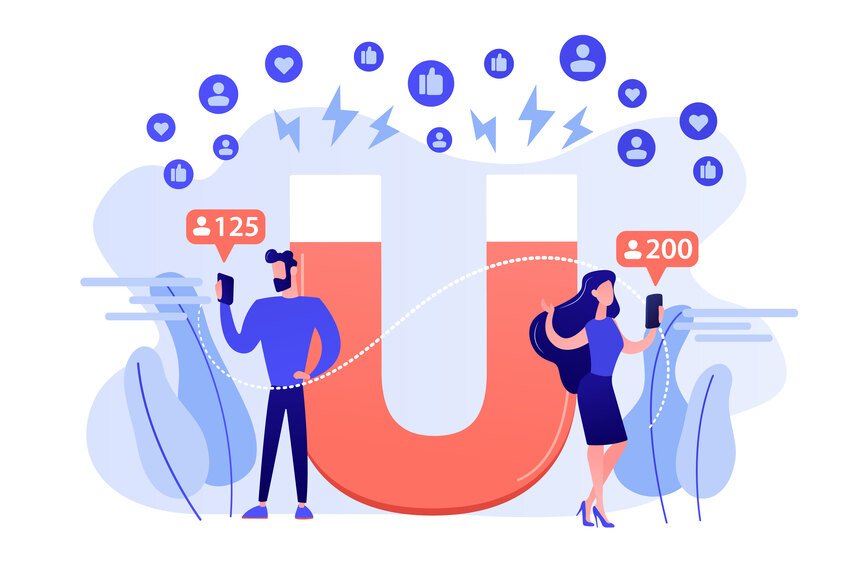Spending money on PPC ads, only to see nothing come back? It’s a frustrating cycle many businesses face. You pour cash into campaigns, hoping for sales or leads, but often just get a big bill at the end of the month. Some people might even think paid advertising simply doesn’t work for them. But the truth is, a “failed PPC strategy” usually means a fixable one, not a lost cause.
This article offers a clear guide to rescue your underperforming PPC efforts. We will show you how to find what’s broken and what to do about it. Learn how to turn wasted dollars into real profits by fixing your ad targeting, copy, and overall approach. Let’s make your ad spend count.
Diagnosis – Identifying the Root Causes of Your PPC Failure
Before you can fix anything, you need to know what’s wrong. Many PPC problems stem from a few common mistakes. Taking time to diagnose these issues will save you a lot of headache and money later on.
Identifying Poorly Performing Keywords
Your keywords are the foundation of your PPC success. Picking the wrong ones, or being too general, can drain your budget fast. Are you showing up for searches that don’t fit your business? This is a huge money pit.
To find these bad keywords, dive into your ad platform’s data. The “Search Terms” report in Google Ads is your best friend. Look for terms users typed that triggered your ads but didn’t convert. These are prime candidates for your negative keyword list, stopping future irrelevant clicks. Also, find new, valuable long-tail terms people are actually searching for.
Analyzing Ad Copy and Creative Weaknesses
Even the best keywords fall flat with weak ad copy. Your ad is your first impression; it needs to grab attention and make people click. Generic headlines or descriptions offer no reason for someone to choose your ad over a competitor’s. Do your ads clearly tell people what to do next?
Start A/B testing different versions of your headlines and descriptions. Try varying your calls to action (CTAs) and highlighting different benefits. Make sure your ad text matches what people will find on your landing page. This connection is vital for good user experience and better results.
Understanding Landing Page Detachment
A great ad gets the click, but a poor landing page loses the customer. If your landing page doesn’t match the ad’s promise, users quickly bounce. Slow load times, confusing layouts, or content that doesn’t clearly show your offer also kill conversions. Think of your landing page as the finish line for your ad.
Every element on your landing page should work towards one goal: converting the visitor. Keep the message clear and focused. Make sure it loads quickly, especially on mobile. Include a prominent, easy-to-use form or button. The page should give people the exact information they clicked for.
Realigning Your Targeting and Audience Segmentation
Throwing your ads out to everyone is a quick way to waste money. Successful PPC relies on reaching the right people at the right time. Who are you trying to speak to?
Refining Audience Demographics and Interests
Knowing your ideal customer is key. Are you targeting based on age, location, gender, or income? Getting specific here means your ads appear before those most likely to buy. Platforms like Google Ads let you narrow down your audience with powerful demographic settings.
A B2B software company once targeted all businesses in North America. Their ads got clicks but few real leads. After changing their strategy, they focused campaigns on specific industries like healthcare and tech, plus job titles such as “CTO” or “VP of Operations.” This simple change led to a 300% increase in qualified leads within three months.
Leveraging Remarketing and Retargeting Effectively
Most people don’t buy on their first visit. Remarketing brings back those who showed interest but didn’t convert. It’s a powerful way to remind them about your offer. Think of it as a second chance, or even a third, to win them over.
Create different remarketing lists. Target people who visited a product page but didn’t buy. Show them specific ads for that product. You can also exclude past customers to focus on new sales or offer them loyalty deals. These tailored ads often have much higher conversion rates.
Exploring New Audience Segments
Don’t just stick to the obvious groups. Look for other people who might be interested in what you sell. Could you target people searching for your competitors? Or those showing “in-market” interest for products like yours?
Lookalike audiences are another smart move. They find new people who share traits with your best customers. As one PPC expert puts it, “The future of PPC is less about keywords and more about understanding and reaching the perfect audience.” This expands your reach intelligently. Expert PPC Agency
Optimizing Bids, Budgets, and Campaign Structure
Even with great ads and targeting, poor bid and budget management can sink your strategy. How you spend your money dictates your reach and cost per result. Struggling with wasted ad spend? Discover how our expert PPC agency can transform your strategy and boost ROI.
Reviewing and Adjusting Bidding Strategies
Are you using the right bidding strategy for your goals? Manual CPC gives you control, but “Target CPA” or “Maximize Conversions” use AI to hit your goals. Using a manual bid for a campaign designed for many conversions might mean missing opportunities. Conversely, an automated bid could spend too much if not watched closely.
Did you know that incorrect bidding can boost your Cost Per Acquisition (CPA) by as much as 40%? It’s true. Regularly check your bid strategy. Match it to what you want to achieve, whether it’s clicks, conversions, or specific cost goals.
Strategic Budget Allocation
Don’t spread your budget too thin. If some campaigns perform great, give them more money to scale. If others consistently fail, cut their budget or pause them completely. It’s like watering the plants that are growing best.
Track your daily spend versus your budget goals. If you have a specific target, make sure you’re pacing correctly. Shift funds from low-performing areas to high-performing ones. This way, your money works harder where it matters most.
Restructuring for Efficiency
A messy campaign structure makes management a nightmare. It also hurts ad relevance and quality scores. Tight, organized ad groups mean your ads are more relevant to specific keywords. This can lower costs and improve performance.
Move away from broad ad groups containing many keywords. Instead, create highly specific ad groups. Each should focus on a very small set of closely related keywords, even just one sometimes. This allows for incredibly targeted ad copy and landing pages, boosting your conversion rates.
Enhancing Ad Creative and Messaging
Your ad copy is your storefront. It needs to be inviting, clear, and persuasive. Are your ads telling potential customers why they should pick you?
Crafting Compelling Value Propositions
What makes you different? Why should someone choose your product or service over others? Your ads must answer these questions quickly. Highlight the unique benefits, not just the features. Focus on what problem you solve for the customer.
Try using the PAS framework in your ad copy: Problem, Agitate, Solve. For example, “Tired of slow internet? (Problem) Lagging streams and frustrating downloads? (Agitate) Get lightning-fast fiber optic, starting today! (Solve).” This speaks directly to user pain points.
Implementing Strong Calls to Action (CTAs)
A great ad needs a clear instruction. What do you want people to do after they read your ad? “Click Here” is okay, but “Buy Now,” “Get Your Free Quote,” or “Download the Guide” are much more direct. People need to be told the next step.
An e-commerce store tested various CTAs. “Shop Now” led to decent clicks. But “Get 20% Off Your First Order” saw a 15% jump in click-through rates, while “Learn More” on an informational ad got 10% more engagement. Specific CTAs guide users effectively.
Utilizing Ad Extensions Strategically
Ad extensions let you add more information and options to your ads. These could be sitelinks to specific pages, callout texts highlighting unique selling points, or structured snippets showcasing services. They make your ad bigger and more useful.
Using ad extensions can increase your click-through rate by 10-15%. They give users more reasons to click and offer helpful details before they even visit your site. Make sure you use as many relevant extensions as possible for each campaign.
Measuring, Iterating, and Scaling for Success
Fixing your PPC is not a one-time job. It needs constant watching, testing, and adjusting. How do you know if your changes are working?
Establishing Clear KPIs and Tracking
You can’t improve what you don’t measure. Set clear Key Performance Indicators (KPIs) like Cost Per Acquisition (CPA), Return on Ad Spend (ROAS), or conversion rate. Make sure your conversion tracking is set up perfectly in Google Ads and Google Analytics. Without accurate data, you are flying blind.
Double-check that every goal, from a purchase to a form submission, is being tracked correctly. This data shows you exactly which fixes are making a difference. It also reveals new areas that might need attention.
The Power of A/B Testing Beyond Ad Copy
A/B testing isn’t just for ads. You can test almost anything in your PPC campaigns. Try different landing page layouts, button colors, or headings. Experiment with new bidding strategies or audience segments. Every test gives you valuable insights.
As a conversion rate optimization specialist might say, “PPC success is a journey, not a destination. You learn by doing, testing, and refining.” Always be looking for small improvements that can add up to big gains.
Scaling Profitable Campaigns Responsibly
Once you find what works, it’s time to grow. Slowly increase the budget for your high-performing campaigns. Watch performance closely after each budget bump. Don’t scale too fast, or you risk losing your efficiency.
Increase your budget incrementally, maybe 10-20% at a time. Monitor your CPA and ROAS daily. If performance dips, pull back slightly and re-evaluate. This careful approach helps you maximize your profits without losing control.
Conclusion: Turning PPC Woes into Wins
Wasting ad spend is a problem, but it’s one you can fix. By taking a close look at your strategy, you can turn a struggling PPC campaign into a powerful growth engine. Start by diagnosing issues in keywords and ad copy. Then, refine your audience targeting and optimize your bids and budgets. Craft compelling ad creative and always measure your results.
PPC success comes from a smart, data-driven approach. It takes patience and a willingness to test and adjust. Stop letting your ad dollars vanish into thin air. Use these steps to revive your failed PPC strategy and drive real, profitable growth for your business.
Read Dive is a leading technology blog focusing on different domains like Blockchain, AI, Chatbot, Fintech, Health Tech, Software Development and Testing. For guest blogging, please feel free to contact at readdive@gmail.com.





